Checks returned for insufficient funds can create numerous additional charges from both the bank and the holder of the check. A thorough reconciliation involves matching each entry to the bank’s statement while accounting for timing differences. If a check is recorded but has not cleared, it remains an outstanding liability until processed.
- As you identify matching transactions, such as checks that have been cashed or debit card purchases that have posted, mark them off in both your register and on the statement.
- This review may cause your bank to charge an account research fee of about $25 an hour.
- The register is where you should keep a tangible record of any checks you write, your ATM withdrawals, and your deposits.
- Reconciling your check register with bank statements ensures accuracy.
- Recording transactions in your checkbook is a straightforward process that helps you keep track of your finances.
Definition of Balance a Checkbook
- Unauthorized transactions or fraudulent activity are another source of discrepancies.
- To keep track of your finances, it’s essential to balance your checkbook regularly, which means reconciling your checkbook register with your bank statement.
- The loss of blank checks can be a very costly mistake unless reported to the bank immediately.
- Avoid missing payments and incurring late fees by setting up payment notifications through your app, email or text.
- Checkbooks are compact, paper-based financial instruments you receive after opening a checking account with a financial institution.
- You can create your own transaction register on an open-source spreadsheet platform, such as Google Sheets.
Banks generally honor checks for up to six months before considering them stale-dated. Below the date, the payee line specifies who will receive the funds. If a check is made out to multiple people, banks may require all parties to endorse it before cashing or depositing.
When needed, you can also review each transaction against your monthly bank statement. As you mark each one with an “R”, the screen will subtract each amount from the totals displayed. Accept funds in seconds with a virtual card and use it just like a debit card. Set a schedule for updates—daily, weekly, checkbook accounting or after each transaction. Frequent updates prevent missed entries, while less active accounts may only need weekly reviews.
Once the recipient deposits the check, both banks coordinate the fund transfer into the recipient’s account. At the end of the month—or more frequently—you can use your bank statement, checkbook register, and check carbon copies to make sure your checkbook entries and account match. The register can be crucial in helping you manage your checking account. It allows you to keep a running total of your checking account balance.
Keeping record of personal finances is important… and easy!
On rare occasions a check is still required, such as paying rent, which requires writing a check out to your landlord. If you need to reconcile your transactions against your monthly bank statement, there are two different features to make that task easy. The first feature will show you the total dollar amount of withdrawals, deposits and checks that you have already entered into your spreadsheet for the date range specified. This is often all that is needed to confirm you have everything entered correctly.
Your Statement
Before being handed over in exchange for goods or services or any payment, a customer must fill out certain information on the check and then sign it. The information to be filled out includes the date, the name of the individual or business, and the amount of funds to be withdrawn. Though both parts of the word “checkbook” are quickly becoming meaningless, being able to reconcile your accounts will always be an important part of financial health. Plus, with the addition of digital banking services like automatic bill payments and mobile deposits, it’s critical to know when your money is in motion.
Reconciling With Bank Statements
To start a checkbook, you’ll need to set up a record of your account information, including your name, address, and account number. Compare your bank statements and your own records frequently to verify that you and your bank are on the same page. If you come across a transaction that is unauthorized or contains an error, contact your bank and find out how to get it corrected. Some of your most recent transactions might show up on the following month’s statement. Ensure you note those transactions in your personal record to avoid any surprises. It is still in your best interest to review account activity once a month to help you keep track of what you’re spending and identify errors or incorrect charges.
Include tiny amounts of interest that your account may have earned and services fees the bank might have charged you. Making a practice of doing this consistently will help you avoid small discrepancies when reconciling your bank statements. Checkbooks include a set quantity of numbered checks and usually contain some type of register in which users can keep track of check details and balance account statements.
Similarly, if a deposit is noted in a check register but does not appear on the statement, it may still be pending. Any unrecognized charges, such as unauthorized withdrawals or bank fees, should be investigated promptly. Errors on the bank’s part, though rare, can occur and typically require formal dispute resolution within a specified timeframe, often 60 days under Regulation E of the Electronic Fund Transfer Act. When you balance your accounts, it shows you much money you actually have an available.
Each check has specific fields that must be completed for a transaction. The upper left corner displays the account holder’s name and address. A unique check number appears in two locations, typically the upper right corner and at the bottom, serving as an identifier for tracking. The date line, usually in the upper right, indicates when the check is written. If you struggle to get into this kind of habit, a number of modern banking conveniences can help remind you to check in once a day. For instance, the majority of modern banks offer smartphone apps that allow you to easily check your balance, see your transactions and even deposit checks via your phone.
I somehow came across your YouTube video on how to create your own Excel spreadsheet for tracking… And then I followed the link 🙂 the pre-made spreadsheet is absolutely great. I purchased the 2024 version and it has so much great tracking abilities. How much money will I have at the end of the month before I get paid again?
Record Transactions as They Happen
Writing a check is a straightforward process, but it’s essential to get it right to avoid any issues. Use a pen to write the check, as this reduces the risk of someone altering the check or changing the amount of money you’re paying someone. The rest of the empty fields are used to write out a check, including the date, payee, dollar amount in numbers, dollar amount in words, memo line, and signature line. The dollar amount is written twice—numerically in a designated box and in words on a separate line. To prevent fraud, drawing a line after the written amount can prevent unauthorized alterations.
How do I add a check to my checking account?
A transposed digit or skipped entry can significantly impact your records. Double-checking entries and using financial software with error detection features can help prevent mistakes. Arrange transactions chronologically to reflect the natural sequence of events. For example, if a payment appears on your bank statement but not in your register, chronological sorting can quickly reveal the issue. Start by grouping transactions into categories such as deposits, withdrawals, or transfers. Master the art of balancing a checkbook to maintain financial stability and ensure accurate tracking of your personal finances.
This information may also be available over the phone or through a secure online account. Making sure the registry balance matches the objective information provided by the bank is called ‘balancing a checkbook’. Accurate checkbook information can be vital if an outstanding check amount would be higher than the available balance in the account.



